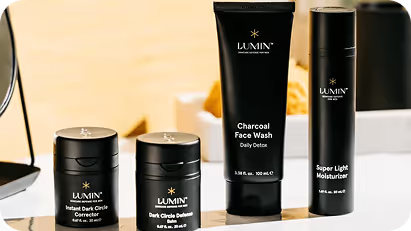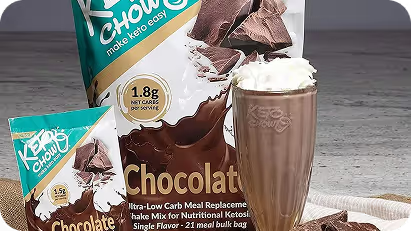Ways to Supercharge Sales & AOV in eCommerce | Loop Subscriptions
Tracking metrics is a must when running an eCommerce store. Well, those data will help you uncover unseen insights on the storefront. Hence, store owners like you can come up with timely and effective strategies.
One of the metrics that all online merchants care about is average order value (AOV). So, today's article will explain what AOV is, what it means to your online business, and, importantly, proven hacks to bump it up.
What is AOV?
Average order value is the average amount of money each shopper spends per order with your store. To check your AOV, use the following simple formula:

Let's see an example:
- Your total revenue: $2,500
- Total order: 30
So the AOV would be $2,500 split between 30, which equals $83.33.
This means that, on average, a shopper spends $83.33 for each purchase from your store.
Average Order Value By Product Category
You can check industry benchmarks to know how your store is performing compared to others. Currently, the global AOV in eCommerce is $109. However, each business is different, so take the following figures as a reference source. As of June 2023, the numbers look like:
| Category | Average Order Value (US Dollar) |
|---|---|
| Beauty & Personal Care | $72 |
| Food & Beverages | $93 |
| Multi-brand Retail | $72 |
| Pet Care and Veterinary Services | $65 |
| Fashion, Accessories, and Apparel | $141 |
| Consumer Goods | $126 |
| Luxury and Jewellery | $137 |
| Home & Furniture | $254 |
Source: Loyalty Lion
What Does AOV Mean To Your Online Store?
As mentioned above, AOV is an indicator to show your shoppers' behavior as well as what's happening with your profit.
If you're selling 3 pants priced at $15, $21, and $29 with an AOV of $19. Looking at this number, we can point out 2 patterns in consumer behavior:
- Your consumers are not purchasing multiple items.
- The low-priced pants account for the majority of sales.
Average order value(AOV) = Total revenue/number of checkouts
Also, when you compare AOV to cost per order (CPO), you'll get a view of how much you earn from each order. For instance, your CPO is $1 while your AOV is $10, so your profit would be $9 per order. By increasing AOV by 15% to $11.5, you would gain an extra profit of $1.5 per transaction.
6 Best Practices To Boost AOV For Online Stores
Many proven ways can help you make use of each customer visit and bump up AOVs for you. Let's walk through together and see how leading brands are doing.
1. Free Shipping Banner
Do you know that 65% of consumers check free shipping thresholds before they add a product to their shopping cart? Regarding online shipping, 21% of US purchasers wouldn't forgive businesses for late delivery, while want same-day, next-day, or two-day delivery.

Displaying a head banner to keep reminding your customers about the free shipping threshold is brilliant at increasing your AOVs.
According to CXL, online consumers consider delivery fees an unexpected cost – the biggest reason behind cart abandonment. However, shipping costs are rising, particularly during the holiday season. So calculate carefully before setting the threshold to ensure the figure can compensate for your lost margins.
2. Upselling
Upselling involves encouraging customers to purchase a higher-end or more expensive version of the product they're viewing. This technique is widely favored by online brands all over the globe, even Amazon.

Amazon used a product recommendation block to upsell the Learning Friends – 100 Word Book for Kids. These suggested products have similar features to the currently viewed Wordbook but offer a higher price.
If implemented properly, you'll satisfy shoppers while increasing the value of their orders. Yet, you must be very strategic in choosing which products to promote and when to show them along the buying journey. Don't pick random items to bombard your customers and urge them to purchase like an aggressive salesperson.
3. Incorporating UGC
User-generated content (UGC) holds immense importance for conversions in today's digital landscape. It serves as a powerful tool to build trust and authenticity among potential customers. When shoppers see real people using and endorsing products through UGC like photos, videos, and reviews, they are more likely to feel confident in their purchasing decisions.
UGC provides social proof, validating the quality and desirability of products or services. Additionally, it fosters a sense of community and engagement, encouraging interaction between brands and consumers. By leveraging UGC effectively, businesses can significantly increase conversion rates, driving more sales and cultivating loyal customer relationships.

With Tagshop, discovering amazing UGC is effortless, and you can ensure it aligns perfectly with your brand's values. By showcasing real people using your products and adding reviews directly to store from satisfied customers, you'll build trust with authentic testimonials and drive more sales.
4. Cross-selling
It would be a miss if we didn't mention cross-selling here. Cross-selling suggests related or complementary products that go hand-in-hand with the chosen item. That's why it's a common approach that online merchants apply to grow AOVs.

Product recommendation is always the right-hand man when brands like to implement upselling or cross-selling techniques.
On the product page, here is the golf cap; just Golf Stuff displays a block of related items right under the product details. These items are golf pants, leather belts, and sunglasses – all come with golf caps that will give a golfer a professionally complete look.
5. Offer Discounts On Minimum Purchase Thresholds
In case you wanna boost AOVs while clearing out some products, give shoppers discounts on a minimum purchase of something like $100 or 20. Be careful! Make sure the deal won't affect your profit margins.

Protein Package is running a Pick and Mix discount program to encourage shoppers to buy as many products as possible to get a discount of up to 15%. They divide the discount level into 3 tiers: tier 1 (10+ products), tier 2 (20+ products), and tier 3 (30+ products). The more products they buy, the greater the discount is.
6. Limited Time Offers
Urging shoppers to make a purchase from their shopping cart is quite tricky. They often hesitate to check for unexpected costs or reconsider whether they shop at the best price yet. If not, they'll immediately abandon the cart.

Good American offers a flash sale for low-đemand pairs of jeans with an extra 50% off. Typically, online brands show a real-time countdown or when the sale ends. However, this American clothing label doesn't reveal that detail. Instead, they just tell everyone that the deal ends soon – you'd better purchase it now or never. Undoubtedly, this tactic creates a sense of urgency and sparks a strong interest in buying multiple items.
Wrapping Up
Are you confident in unlocking the power of AOV yet? With some calculations, those approaches today are simple but would greatly impact your online business. Try them now and tell us which one works best for you.






















.png)







.png)








































